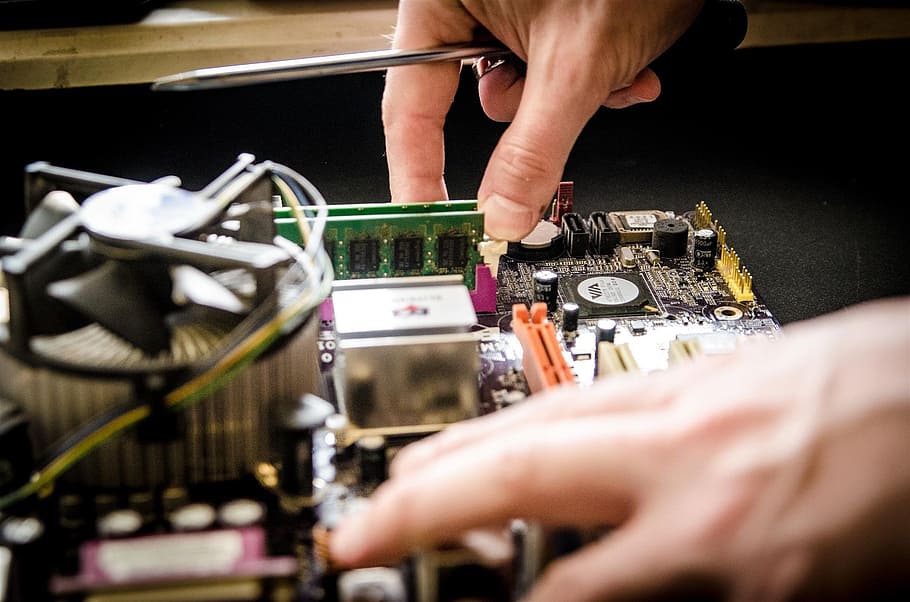With equivalent products, value added is increasingly based on the service provided. High-tech, household appliances, cars, medical devices or agricultural machinery, manufacturers must now provide the most reliable equipment possible and guarantee an efficient after-sales service.
Aware that logistics has become the differentiating criterion, manufacturers, distributors, maintenance and repair companies are looking to optimize the supply chain of their spare parts to gain speed, agility and productivity. The objective is twofold: to improve the quality of service provided to their customers and ultimately their profitability.
Spare parts: a key market
With 3,000 manufacturers and 7,000 distributors of spare parts in Europe, an increasing number of references and return rates approaching 15%, the Aftermarket is now a market in its own right with colossal stakes. According to the McKinsey study, it represents on average 15% of the turnover of industrial groups [1].

Figure 1 - Armstrong & Associates - 2017
With a forecast growth of 3% per year until 2030 [3], the vitality of the spare parts market can be explained by several factors:
– The rapid evolution of new technologies, which involves frequent updates of equipment with a risk of rapid obsolescence of stocks.
–The development of a circular economy: sustainability and product repairability have become purchasing criteria. Manufacturers must be able to supply spare parts 7 to 10 years after the first commissioning of the products.
– The acceleration of equipment turnover, which requires storing and making available to end customers several generations of parts.
These three factors force the after-sales players to reorganize their stocks and rethink their flows. In short, to optimize their maintenance activities with modular and customized logistics solutions.
”While the major manufacturers have long optimized the supply chain of their spare parts, the development of the Pure Player type Oscaro and the rise of marketplaces have sharpened the demands of customers in terms of speed and flexibility. Logistics will play a facilitator role to improve operational performance and service quality” Jérôme PEDRENO – Business Developer HARDIS GROUP [2]
After-sales logistics: the customer at the heart of the process
The spare part market is in full swing. Manufacturers, equipment manufacturers and manufacturers in all sectors are rethinking their after-sales logistics to shorten distribution times, increase the frequency of deliveries and accelerate the return flow of parts intended for repair.
This reengineering has two main objectives: to improve customer service and experience and to reduce the volume and cost of capital inventory, which is considered too high. In short, manufacturers rely heavily on their after-sales service to build customer loyalty and increase their income.
- Reduce delivery times
The immobilization of an aircraft, the breakdown of an automaton, the shutdown of a machine tool, the malfunction of a device or health equipment can have serious consequences: on a patient, whose life may be endangered, on the production or service delivered, in terms of reputation and image, or financially.
In general, they propose three levels of service adapted to the criticality of the situation:
– Urgent deliveries, for interventions in two, four or eight hours
– Night deliveries, which allow intervention from the first hour the next morning
– “Standard” deliveries on D+1, for the least critical cases or to meet a resupply logic
As for distributors, dealers and repair and maintenance companies, the issue is just as crucial. With an economic model based on the number of interventions performed daily by engineers and technicians, it’s all about productivity. Every minute, every mile counts. Being able to dispose of the parts early in the morning and close to the places of intervention therefore confers a major advantage. This maximizes the time technicians spend with their customers, and significantly improves the profitability of their business.
- Increase the frequency of deliveries
Fixed-time serial flows are no longer compatible with the expectations of the spare part market. Today, manufacturers require their logistician to deliver quickly, in the place and at the times that suit them. At the same time, they are asking distributors to be more flexible and to adapt their opening hours to their new requirements.
In this context, the modularity of the delivery offer becomes the key factor. It is necessary to be able to deliver quickly, several times a day if necessary, and where the customer requires it: directly on site, in the trunk of vehicles of technicians, or even counter, near the places of work or intervention. It is therefore also the quality and density of the logistician’s distribution network that bring immediate added value
- Accelerate the return flow
The management of return flows – that is, unused, defective or under warranty parts intended to be repaired and returned to stock – is also decisive. Indeed, the rotation speed of the parts acts directly on the value of the stocks: the faster the return flow and the less expensive the stock is.
It is therefore essential for manufacturers to set standards in terms of the return time of a part, and to have the ad hoc logistic solution, which allows simultaneous delivery and collection, synonymous with productivity gain and cost sharing.
Another advantage: a quick or urgent delivery of parts, combined with a good management of returns, makes it possible to remove dormant stocks, which have been built up over the years on site, in warehouses, or in technicians’ vans. These stocks, which are fixed or have a low turnover rate, are proving to be costly for companies.
Finally, the speed of the return flow minimizes the repair time of the defective part.







